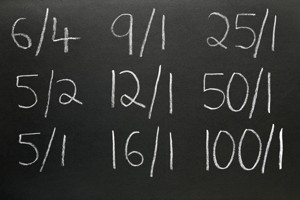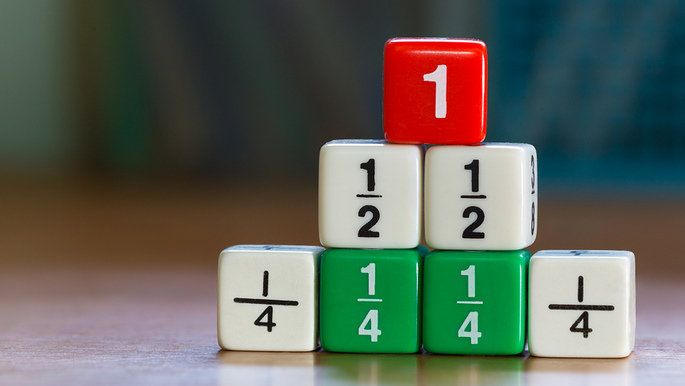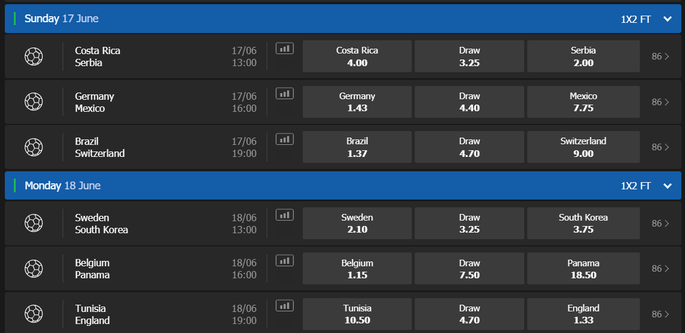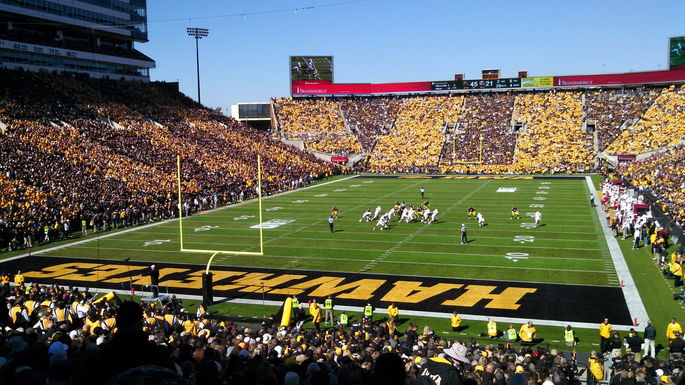Betting Odds Formats
 Understanding odds is essential to betting and in a way the two should really be viewed as almost inseparable. Without odds there is no betting and without betting, there are no odds.
Understanding odds is essential to betting and in a way the two should really be viewed as almost inseparable. Without odds there is no betting and without betting, there are no odds.
We’ve got separate features on value betting (which is concerned with how the odds and probability compare), as well as a full odds feature that explains what odds are and how they work, for those totally new to betting. However, what we are looking at here is the different ways in which odds can be expressed.
Odds are simply a mathematical representation of the returns you will get when betting on any given event but they can be written down, or represented, in different ways and here we take a look at fractional odds, decimal odds, American odds and also briefly consider the other ways in which odds can be expressed.
Almost all online betting sites offer the facility to switch between odds formats, so you may well find it unnecessary to understand – or even be aware of – the different odds formats. This setting can usually be changed on the home page or under “My account”, so if you find the odds at a site aren’t presented how you normally see them then be sure to try to change the format to your preferred system.
However, some online bookies may only offer odds in one format, with betting exchanges in particular, for example Betfair, tending to only use decimal odds. If you want to fully understand odds, want to compare between exchanges and “normal” bookmakers and want to have a better appreciation of non-UK bookies (who often don’t offer fractional odds) then read on as we explain the most commonly used odds formats.
Fractional Odds

Fractional odds are by far the most common type of odds format UK betting fans will encounter. They are the “original” odds format in the UK and certainly the one that most UK bettors, especially older ones, use. Fractional odds are expressed thus:
- 1/2
- Even money = Evens = 1/1
- 5/2
- 10/1
In fractional odds the number on the top (or left) of the fraction, called the numerator, whilst the number on the bottom or right of the odds is the denominator. The numerator indicates the profit you will make on your bet based on a stake equal to the denominator, such that in the example above of 1/2, a bet of £2 will yield a return of £3 and give a profit of £1. Where the number on the right is larger, the odds are “odds-on” and can be expressed as “2/1 on” and whilst these are written and said differently, “one to two” is exactly the same as “two to one on”.
Fractional odds were created a long, long time ago, with a 16th century Shakespeare reference one of the earliest written usages of such terminology. Many of the idiosyncrasies of fractional odds, for example why odds are so often expressed “to eight” (for example 15/8, 13/8) and not to the lowest denominator (for example 100/30 and 6/4, which could be expressed as 10/3 and 3/2 respectively) are down to the fact that they were created such a long time ago. The links between horse racing and betting, and the pre-decimalisation currency explain most of the quirks of fractional odds and so whilst these may confuse many a modern punter, they are rooted in history.
Examples
- If you bet £10 at 1/2 you would receive £15 back (£5 profit + £10 stake)
- If you bet £10 at EVENS you would receive £20 back (£10 profit + £10 stake)
- If you bet £10 at 5/1 you would receive £60 back (£50 profit + £10 stake)
Decimal Odds

Decimal odds tend to be used on betting exchanges, in many European countries and in America, Canada, Australia and New Zealand. They are sometimes also referred to as European odds and due to their simplicity are becoming increasingly popular. Decimal odds are expressed as below:
- 1/2 = 1.5 in decimal odds
- 1/1 = 2.0 in decimal odds
- 5/2 = 3.5 in decimal odds
- 10/1 = 11 in decimal odds
The key thing to note about decimal odds is that whilst fractional odds indicate your profit, decimal odds more simply show your returns. The decimal odds for any given event indicate what your return on a £1 winning bet would be, such that decimal odds, as shown above, of 1.5, mean you would get £1.50 back, including your initial £1 stake.
Perhaps the major benefit of decimal odds is that comparison between different odds (be that for different selections or the same one but at different bookies) is much easier. Those familiar with fractional odds or simply those who are skilled at mental arithmetic will easily be able to see that odds of 15/8 are preferable to 7/4. However, those two odds expressed in decimal terms are 2.875 and 2.750 and as such it’s easier to see that 15/8 is marginally higher. With decimal odds the rule is simple, the higher the number, the greater the odds.
Most if not all bookmakers calculate decimal odds to two decimal places. For example, with the odds given above, 2.875 will either be listed as 2.88 or 2.87. This can create some very small differences between the payout you may expect and the one you actually receive, especially if you have converted from fractional to decimal or vice versa (either mentally or by switching the settings at the site in question).
Examples
- If you bet £10 at 1.5 you would receive £15 back (1.5 x £10) including your stake
- If you bet £10 at 2.0 you would receive £20 back (2 x £10) including your stake
- If you bet £10 at 6.0 you would receive £60 back (6 x £10) including your stake
American Odds (Moneyline)

American odds are not really used at all at any main UK or European betting sites and, as the name makes clear, they are prevalent in America (and Canada too), although those countries often use decimal odds too. Knowledge of the system of American odds is probably less important than a grasp of both fractional and decimal odds but even so American odds are worth at least being aware of and are written as such:
- 1/2 = 1.5 = -200 in American odds
- 1/1 = 2.0 = +/- 100 in American odds
- 5/2 = 3.5 = +250 in American odds
- 10/1 = 11 = +1000 in American odds
American odds, which you may occasionally see referred to as “moneyline odds”, use two options, depending on whether the odds are a. evens or higher or b. beneath evens, that is to say odds-on. If the odds are odds-against, that is to say even money (2.0 in decimal odds) or greater, they are written with a plus (+) symbol followed by a number and indicate the profit the punter would receive on a winning bet with a 100 unit/dollar stake. As we can see, therefore, +100 means a $100 bet yields a $100 profit and is the same as evens or 2.0 in decimal (it could also be written -100 as it would take a $100 bet to win $100). As with fractional odds and unlike decimal odds, US odds don’t directly indicate the total return, just the profit, with the stake returned on top of that.
For odds priced lower than evens a minus (-) symbol is used. In this instance the number following the minus symbol demonstrated how much would have to be wagered to produce a profit of $100. For example 10/11 (or 11/10 on) is -110 in US odds, indicating that in order to make a profit of $100 you would need to stake $110, with the same odds in decimal format being 1.909.
Examples
- If you bet £10 at -200 you would receive £15 back (£5 profit + £10 stake)
- If you bet £10 at +100 you would receive £20 back (£10 profit + £10 stake)
- If you bet £10 at +500 you would receive £60 back (£50 profit + £10 stake)
Miscellaneous Odds Formats
Whilst the vast majority of UK betting sites work principally in fractional odds, most will offer decimal odds and many will offer American price formatting too. However, as if getting your brain round three systems wasn’t enough of a challenge, there are a number of other odds formats used around the world too. These are mainly used in specific Asian areas and markets and so you will almost certainly not have to use them but for the sake of clarity below is a non-exhaustive list of alternative odds formats.
- Malaysian Odds - Used mainly in Malaysia – surprise, surprise! – Malay odds combine fractional and US odds, with a value no larger than 1 and use of the plus and minus symbols. +0.50 or just 0.50 means a bet of 1 returns a profit of 0.5 (plus stake) whilst -0.50 means a bet of half a unit returns a profit of one unit (plus stake).
- Hong Kong Odds - Hong Kong odds are, though it’s hopefully unnecessary to say it, used in Hong Kong. In some ways they blend the formats and concepts of fractional and decimal odds, being expressed in a decimal fashion but excluding the stake, such that 2/1 is simply 2.0.
- Indonesian Odds - Indonesian odds combine elements of various formats and when positive, for example +3.00 or just 3.00, they are the same as Hong Kong odds but when negative they work similarly to US odds, but are always 1/100 of the value. For example -300 is the same as -3.00 and indicated you must bet three to make a profit of one, with the three unit stake also returned.
Odds Comparison Table
To make like a little easier for you, we've included a table below that compares the various odds formats - think of it as a cheat sheet if you will. So if you want to know what 1/2 is in decimal odds, just check the chart below:
| Fractional | Decimal | American | Return On £10 Bet |
|---|---|---|---|
| 1/10 | 1.10 | -1000 | £11.00 |
| 1/9 | 1.11 | -900 | £11.10 |
| 1/8 | 1.13 | -800 | £11.25 |
| 1/7 | 1.14 | -700 | £11.40 |
| 1/6 | 1.17 | -600 | £11.70 |
| 1/5 | 1.20 | -500 | £12.00 |
| 2/9 | 1.22 | -450 | £12.20 |
| 1/4 | 1.25 | -400 | £12.50 |
| 2/7 | 1.28 | -350 | £12.80 |
| 3/10 | 1.30 | -333.3 | £13.00 |
| 1/3 | 1.33 | -300 | £13.30 |
| 4/11 | 1.36 | -275 | £13.60 |
| 2/5 | 1.40 | -250 | £14.00 |
| 4/9 | 1.44 | -225 | £14.40 |
| 1/2 | 1.50 | -200 | £15.00 |
| 8/15 | 1.53 | -187.5 | £15.30 |
| 4/7 | 1.57 | -175 | £15.70 |
| 8/13 | 1.62 | -162.5 | £16.20 |
| 4/6 | 1.66 | -150 | £16.60 |
| 8/11 | 1.72 | -137.5 | £17.20 |
| 4/5 | 1.20 | -125 | £12.00 |
| 5/6 | 1.83 | -120 | £18.30 |
| 10/11 | 1.90 | -111.1 | £19.00 |
| 1/1 aka EVENS | 2.00 | +/- 100 | £20.00 |
| 11/10 | 2.10 | +110 | £21.00 |
| 6/5 | 2.20 | +120 | £22.00 |
| 5/4 | 2.25 | +125 | £22.50 |
| 11/8 | 2.38 | +137.50 | £23.80 |
| 6/4 | 2.50 | +150 | £25.00 |
| 13/8 | 2.63 | +162.50 | £26.30 |
| 7/4 | 2.75 | +175 | £27.50 |
| 9/5 | 2.80 | +180 | £28.00 |
| 15/8 | 2.88 | +187.50 | £28.80 |
| 2/1 | 3.00 | +200 | £30.00 |
| 85/40 | 3.13 | +212.50 | £31.30 |
| 11/5 | 3.20 | +220 | £32.00 |
| 9/4 | 3.25 | +225 | £32.50 |
| 12/5 | 3.40 | +240 | £34.00 |
| 5/2 | 3.50 | +250 | £35.00 |
| 13/5 | 3.60 | +260 | £36.00 |
| 11/4 | 3.75 | +275 | £37.50 |
| 3/1 | 4.00 | +300 | £40.00 |
| 10/3 | 4.33 | +333.30 | £43.30 |
| 7/2 | 4.50 | +350 | £45.00 |
| 4/1 | 5.00 | +400 | £50.00 |
| 9/2 | 5.50 | +450 | £55.00 |
| 5/1 | 6.00 | +500 | £60.00 |
| 11/2 | 6.50 | +550 | £65.00 |
| 6/1 | 7.00 | +600 | £70.00 |
| 13/2 | 7.50 | +650 | £75.00 |
| 7/1 | 8.00 | +700 | £80.00 |
| 15/2 | 8.50 | +750 | £85.00 |
| 8/1 | 9.00 | +800 | £90.00 |
| 17/2 | 9.50 | +850 | £95.00 |
| 9/1 | 10.00 | +900 | £100.00 |
| 10/1 | 11.00 | +1000 | £110.00 |
| 11/1 | 12.00 | +1100 | £120.00 |
| 12/1 | 13.00 | +1200 | £130.00 |
| 13/1 | 14.00 | +1300 | £140.00 |
| 14/1 | 15.00 | +1400 | £150.00 |
| 15/1 | 16.00 | +1500 | £160.00 |
| 16/1 | 17.00 | +1600 | £170.00 |
| 17/1 | 18.00 | +1700 | £180.00 |
| 18/1 | 19.00 | +1800 | £190.00 |
| 19/1 | 20.00 | +1900 | £200.00 |
| 20/1 | 21.00 | +2000 | £210.00 |
| 25/1 | 26.00 | +2500 | £260.00 |
| 33/1 | 34.00 | +3300 | £340.00 |
| 40/1 | 41.00 | +4000 | £410.00 |
| 50/1 | 51.00 | +5000 | £510.00 |
| 66/1 | 67.00 | +6600 | £670.00 |
| 100/1 | 101.00 | +10000 | £1,010.00 |
| 1000/1 | 1001.00 | +100000 | £10,010.00 |

